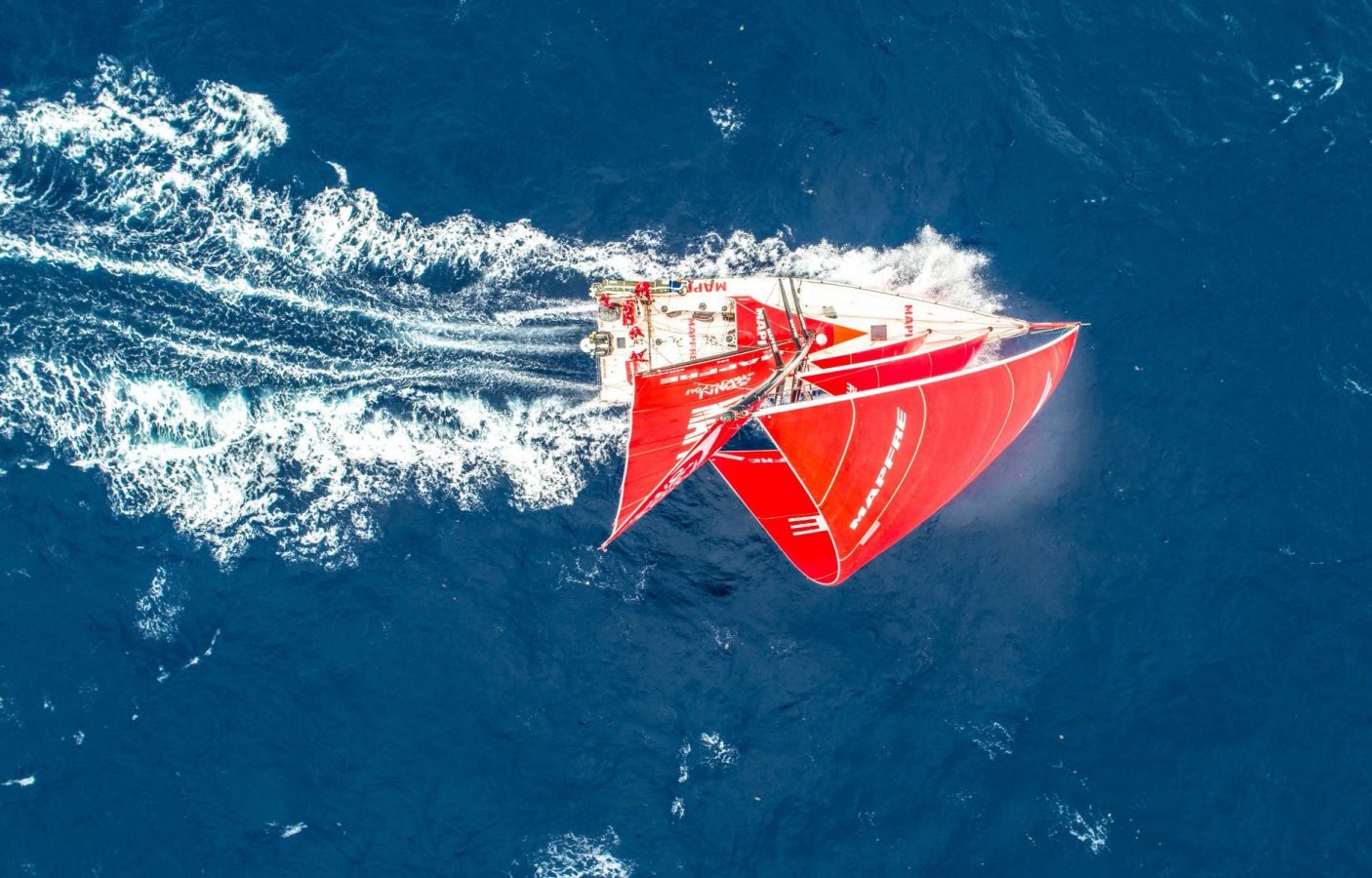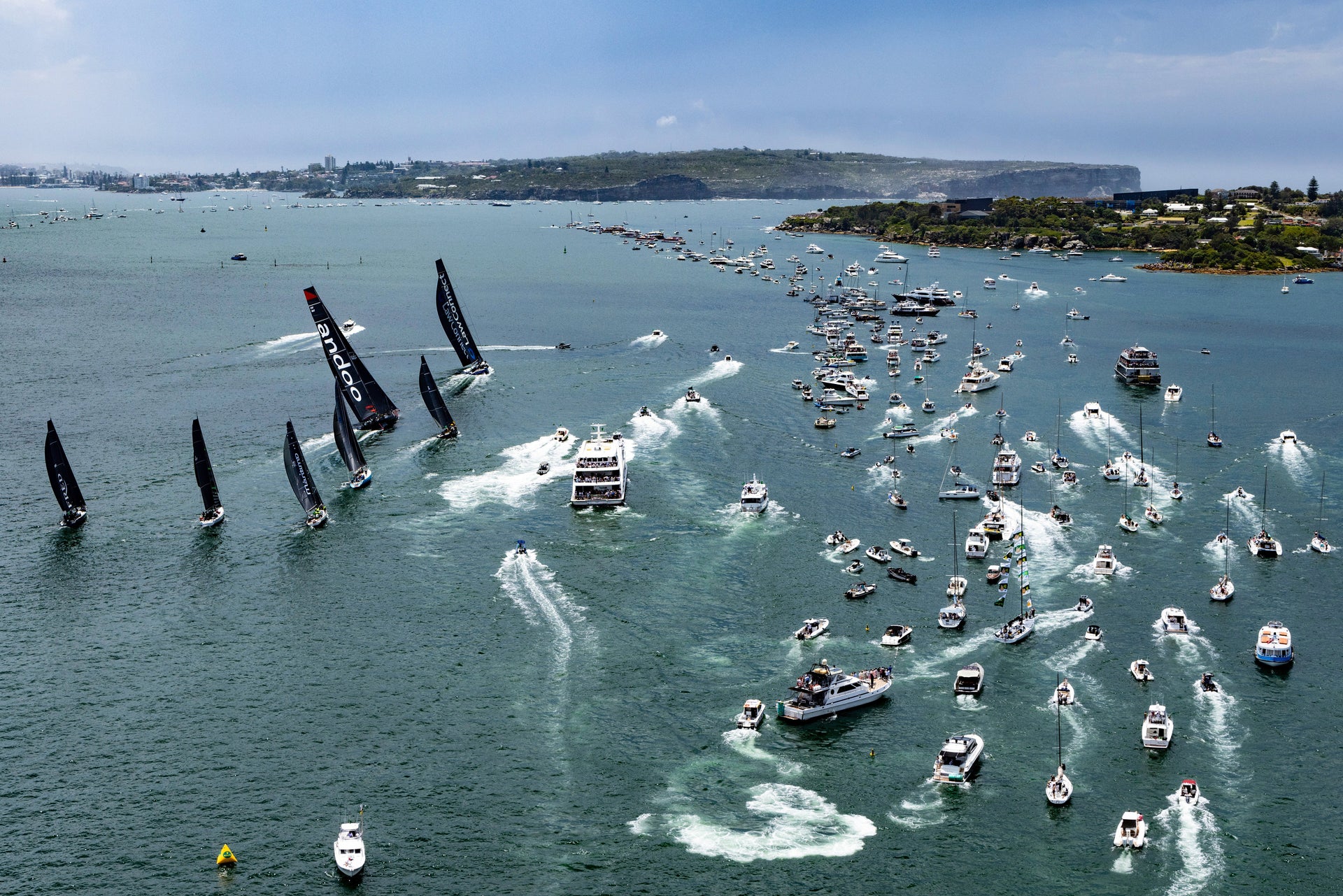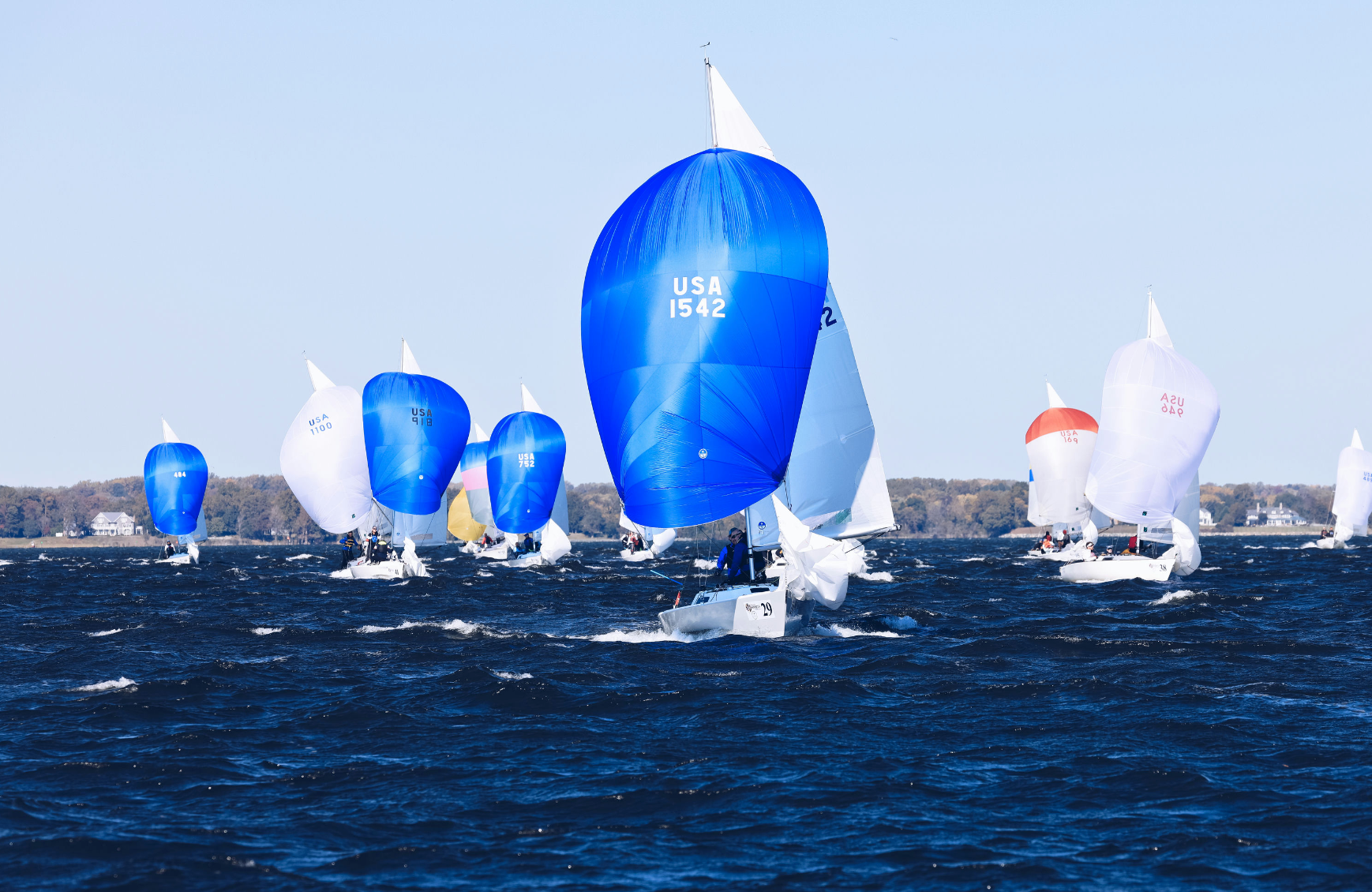VOLVO OCEAN RACE 2017-18 DEBRIEF
45,000 MILES OF EXTREME TESTING
The North Sails Volvo Ocean Race 2017-18 Debrief

The Volvo Ocean Race has long been considered a proving ground for the best offshore sailors in the world. And for the industry-leading marine companies who supply the equipment on the VO65 race boats, this race is where they get pushed the hardest to find solutions for the extreme conditions crews encounter. Such is the case for North Sails, which designed, built, and maintained the one design sail inventory for the 2017-18 fleet.
“This is the toughest race in the world, where fully professional crews push the boats, the rigs, the sails and themselves beyond what was considered to be the limit,” says North Sails President Ken Read, a skipper in two previous editions of the race. “And it’s not just for a day or two or a few hundred miles, it’s all the way around the world, over eight months of racing.”
“For us here at North Sails, there really isn’t a better way to test ourselves. This pushes all of us to stay at the top of our game.”
The intensity of the racing, especially in a one design class like the VO65, makes an event like the Volvo Ocean Race a perfect feedback loop on sail design, engineering, and manufacturing process for North Sails.
This edition of the race allowed more feedback than ever before, partly because of the increased use of drone video, which was sent directly off the boats by independent On Board Reporters, who weren’t being censored by the teams.
“From all the footage, we learned early in this race just how hard these guys and girls are trying to destroy our sails,” Read said, only half-jokingly. “It turned out to be really valuable to see how they sail the boat in real-life racing conditions, compared to what we hear during debriefs during the stopovers. Getting a better understanding of the real use allows us to think about where we can make improvements that will have a positive impact.”
Gautier Sergent was the head of the Volvo Ocean Race 2017-18 project for North Sails. He managed the design and build process, in order to supply the fleet with identical suits of sails, and then oversaw the event-supplied maintenance provider, The BoatYard, at each stopover.
“We try to prepare the sails so they will stand up to everything they will encounter, but I’ll admit, that despite this being my fifth Volvo Ocean Race, I was a little surprised when I saw some of the footage,” he said. “There were a few moments when you say, ‘Oh God… This is what they’re really doing out there.’ I think of it as the expected, unexpected moments.”
Use and abuse of the sails comes with the territory when professionals are gybing along an ice exclusion zone in the Southern Ocean, but this race also saw the crews use the sail inventory in unexpected ways. One technique the teams discovered between the design of the sail plan and the first legs of the race was to sail ‘triple-headed’, sailing slightly tighter angles downwind and flying the Code 0, J2 and J3, instead of a newly designed A3.
“The intention,” Sergent said, “based on what we heard from the sailors after the last race, was to increase the range of the new A3, which would allow them to sail slightly higher and to carry it in stronger winds. The complaint in the last race was that it was too much of a strictly downwind, VMG sail. So we wanted to make something more versatile.”
But in training, some of the teams discovered the more efficient triple-headed configuration, which offered a similar sail area with a much lower center of effort. The technique spread like wildfire through the fleet.
“We spent a lot of time testing before the race started with team AkzoNobel,” said Charlie Enright, the skipper of Vestas 11th Hour Racing and a North Sails expert. “The results were fairly conclusive. You saw the two of us sailing like that out of the start in Alicante and we were one-two in that leg pretty quickly. And that was it for the A3… maybe we should have kept our powder dry a little bit longer!”

Charles Caudrelier, the skipper of the winning Dongfeng Race Team, confirmed there was a lot of watching the opposition and learning from the others in the fleet.
“After the first leg, everybody realized that Vestas 11th Hour Racing and AkzoNobel were much faster using the Masthead 0 and by Leg 2, everybody started to sail like this and we never tried the A3 again!”
For Read, the saga of the discarded A3 was further confirmation of what he’s long known – good sailors still figure out how to trump computer modeling predictions.
“We designed that sail based on the feedback from the previous race and everybody tested it and they loved it,” Read said. “Everyone went into the race thinking the A3 would be a huge part of the sail inventory. Then, as it turned out, they never used it!”
“What happened is, the sailors figured out a way to sail the boat completely differently from the way anyone imagined. That’s where creative sailors always win. And even though it was an option they all wanted, they essentially made a new sail obsolete just by figuring out a better way to race the boat faster with the rest of the sails. And that technique and thinking is going to trickle down through other fleets too.”
That wasn’t the only learning in the 2017-2018 race. The new J0 was designed to limit the number of sail changes needed upwind and to enhance fast reaching, where it outperformed expectations. Yet it was not the pick in the quiver for pure upwind VMG sailing.
Perhaps the biggest success was just how structurally reliable the sail wardrobe was across the fleet. With seven boats racing 45,000 nautical miles around the world, there were no failures that could be attributed to the supplied inventory.

“I think it can be easy to overlook what happened here,” Enright said. “When you don’t hear about something, in this case, it’s a measure of success. There’s a lot of assumed resilience at this stage, which is a bit of tribute really.
“Most of the sails were carried much further up-range from what they were structurally intended to be and as the race wore on, it became obvious that if you wanted to rise to the top, you really had to push the gear and the sails were no different. And yet, across the fleet, there were no problems. You just never had to worry about it.”
It’s even more impressive considering that the most recent inventory was built with 3Di RAW, not the 3Di Endurance product that was used for the 2014-15 race. By discarding the outer polyester film on both sides of the sail, there was a considerable weight saving; mainsails were a full 8 kilograms lighter.
The sailors appreciated both the weight saving and the durability; they could focus on pushing hard, rather than protecting their limited sail allocation.
“With the 3Di RAW sails, we thought they would stand up to whatever we would see,” Caudrelier noted. “We didn’t worry about breaking the sails, but when we started the race we wanted to preserve the shape. The potential for damage is usually highest when we peel to make a sail change. The original idea was always to bear away and take care for every peel. But the race was so close that we almost never did this and I’m sure some of the other teams did it even less than we did. Even so, we knew we could trust the sails.”
“For our part we were confident that the 3Di RAW sails would survive for the race,” Sergent said. “We had used them in IMOCA before, and even though those boats aren’t pushed as hard as the Volvo Ocean Race boats, we felt the sails would hold up fine.” The IMOCA reference is timely, as the next round-the-world crewed race will feature two classes: the high-performance, dynamic, foiling IMOCA 60s as well as the one-design VO65s that have provided such close racing over the past two editions.
The move to IMOCA means the sailmaking design space is open once again. For Sergent, it’s a welcome challenge.
“As a company, North Sails is all about innovation and development and we think we do a better job when we can really show the potential of our expertise, our knowledge, and our tools.”
“We’re already starting to work on a bit of a starter package for our designers and customers,” Sergent continued.”We’ve brought together our in-house experts in the IMOCA and Volvo Ocean Race and we’ve hired Rob Greenhalgh (MAPFRE watch captain) and Charlie Enright to bring some recent, relevant sailing experience to our team.
“We’ve won every edition of the Volvo Ocean Race (since 2001-02) and been the one design sailmaker for the last two editions of the race, and in IMOCA, boats with our sails have won the last two Vendée Globe races so we think we’re in a unique position.”

“It’s exciting and it’s going to be a big challenge,” agreed Read. “We’ve been working with IMOCA 60s for a long time and we’ve had amazing success. We feel like with our people we have the design and engineering expertise, the software and the hardware to produce a winning package for a foiling 60-footer.”
“At the same time, I feel like this is going to be one of those campaigns where you start the race saying, ‘this is my plan’ and you finish the race using the equipment completely differently to what was anticipated. So we have to stay agile.
“Don’t underestimate it. This is a big jump. These are speeds that no one has imagined before for an offshore monohull. There will probably be sail geometries that nobody has considered before this.”
“It’s a brave new world and it’s not going to be easy. But because of our experience in the last couple America’s Cup campaigns putting sails on those foiling catamarans and now working with three of the four Cup teams this time around, I think we have the right people and that our software has evolved and adapted well to meet the challenge.”
If the past is anything to go by, that’s a safe bet.





























